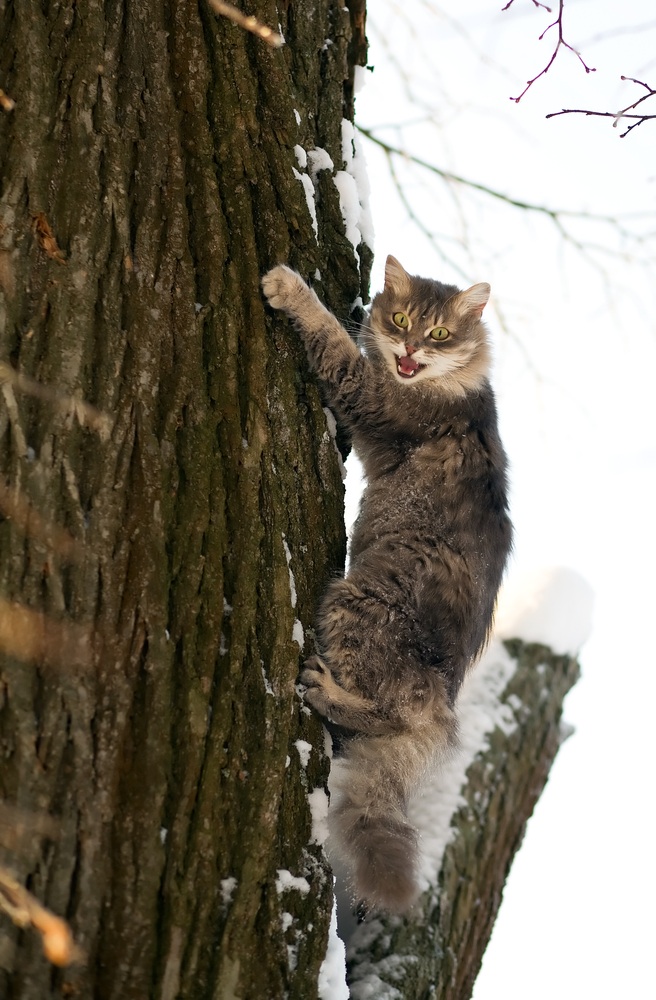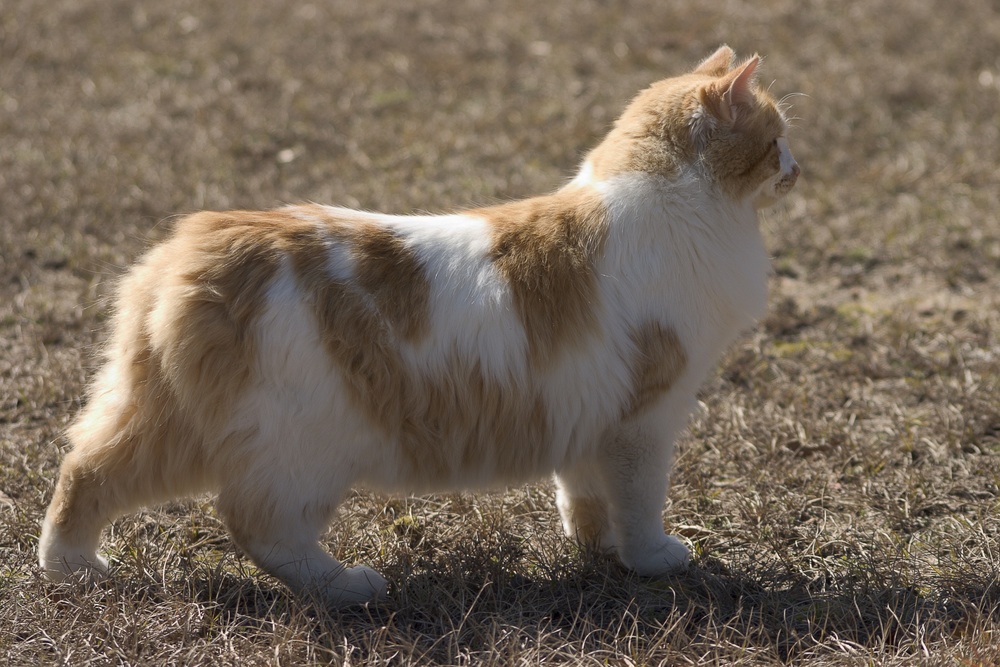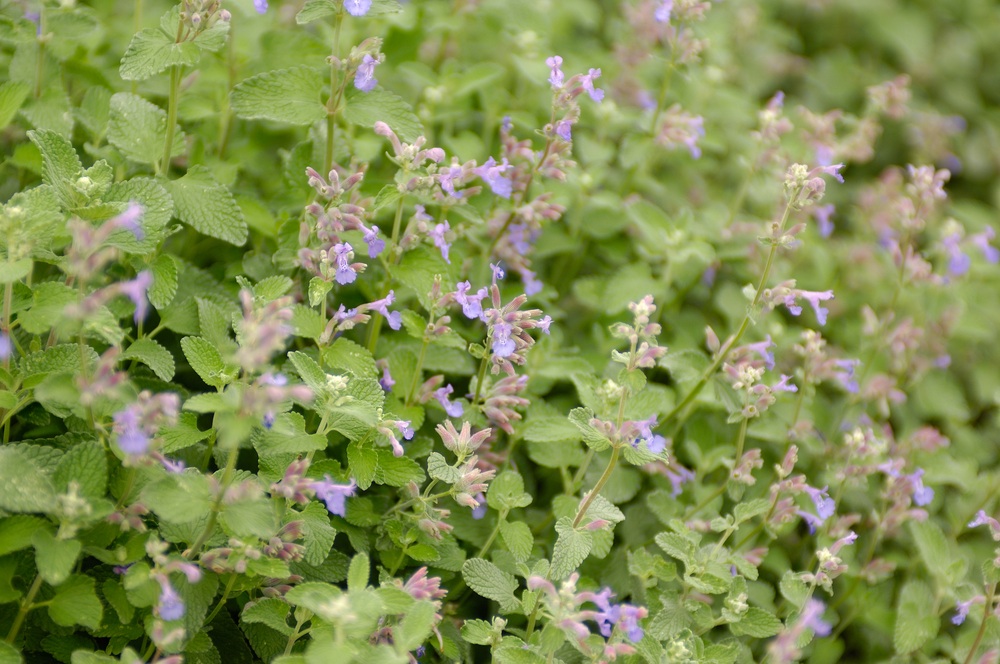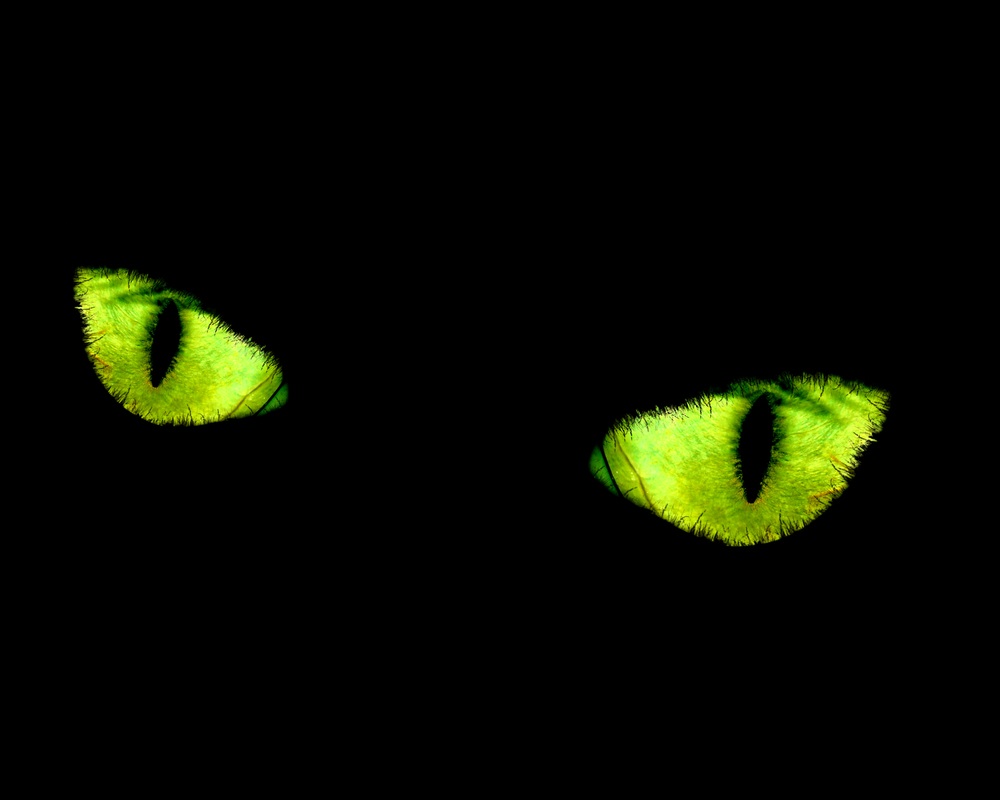Athletic Cats

In terms of athletic ability in the animal world, the cat has to be rated close to the top of the list. Its agility means that in spite of occasional cases where the local fire brigade is called upon to rescue a cat supposedly stuck up a tree, most cats are well-equipped to come down on their own. Having taken refuge here to escape a dog however, a cat will often pause for as long as a day before venturing down, which can induce panic in its owner.
When climbing, the cat uses its sharp claws to anchor itself on to the bark, as it hauls itself up the vertical surface head first. Once it decides to return to the ground, the cat may start by going down backwards for a short distance at first, if it up very high. But it will soon turn round as it approaches the base of the tree, releasing its grip and leaping down to the ground.
Cats are able to jump from heights which would be fatal for other animals. Even if a cat loses its grip, and starts to fall, special balance sensors in its inner ear ensure that the animal can right itself within milliseconds. This enables the cat to land with the greatest likelihood of avoiding injury, on its feet rather than on its side or back.
The flexible skeleton of the cat allows it to swivel, so it can touch down with its front feet, which act as shock absorbers, before its hind feet come into contact with the ground shortly afterwards. In some cases, cats have survived falls of as much as 61m (200ft) from flats, with only concussion.
Nevertheless, from heights of much above 6.1m (20ft), the risk of injury is significantly increased. Fractures of the jaws are a common consequence of falls, resulting from the impact of the underside of the cat's head with the ground. Pelvic injuries can also occur, depending on the force of the impact of the hind limbs, as they hit the ground.
Balancing

When wandering through branches, the cat's strong hind limbs help it to maintain its grip here. The relatively flat part of the lower legs even allow the cat to sit securely, in relative comfort. The tail equally has a role to play, acting as a counterbalance to maintain the cat's position, similar to the way in which a tightrope walker uses a pole to stay upright. The cat often swishes its tail from side to side as it walks along the top of a narrow fence or branch for this reason.
A cat also uses its tail to induce drag as it lands on the ground, stretching it out to slow its impact here. The importance of the cat's tail is shown in the case of the Manx cat, which is popularly thought to be tailless, although it is quite normal for a percentage of Manx kittens to be born with tails of varying length.
The Manx's body actually has a different shape from that of other cats. Instead of walking normally, it tends to hop rather like a rabbit, because its hind legs have become considerably longer than its front legs, and are equipped with more powerful muscles. This helps to compensate for the total or partial loss of its tail, by providing greater stability for the cat at the rear end of its body. In contrast, cats which have otherwise lost part or all of their tail can encounter real difficulties in climbing and keeping their balance off the ground.
The cat's athleticism is not simply restricted to aerial manoeuvring. On the ground, it is a formidable hunter, capable of running for short distances at speeds equivalent to 48kph (30mph), turning in tight circles to catch its quarry.
v Chemical stimulants

But in common with some of today's human athletics, cats are not immune to the effects of chemical stimulants. If you are growing catmint or catnip (sometimes listed in seed catalogues under its scientific name of Nepeta cataria) in your garden, watch out for strange behaviour of cats in its vicinity.
Although young kittens under eight weeks old do not find this plant attractive, as many as two-thirds of older cats will show obvious signs of pleasure when they sniff and rub against it, sometimes even chewing the leaves. They are then likely to start rolling around, purring loudly with contentment.
This behaviour is likely to last for about 15 minutes, after which the cat will ignore the plant, for at least an hour. Although the sensation does not appear to be addictive, cats will often return to catnip plants quite regularly. Another plant which can induce a similar but less intense reaction of this type is valerian (Valeriana officinalis).
No-one is sure just what cats find appealing about catmint. It contains a substance called nepetalactone, a compound which is related to marijuana, so they may have a hallucinogenic experience. Yet this compound is also similar to one present in the urine of male cats, and known to cause female cats to behave in a similar fashion when they are in heat. If this is the case with catnip, then nepetalactone itself evokes a much stronger response, because it appeals to cats of both sexes, and it does not matter whether or not the female is in heat.
Manufacturers have produced a wide range of toys for cats containing dried catnip, or even oils extracted from this plant. They can evoke similar responses, although they are probably not as potent as those produced by the living plant.
The senses

Cats actually depend heavily on their sense of smell. Aside from their nose, they also have the ability to detect scents through the mouth. The Organ of Jacobson, located in the roof of the mouth, responds to air-borne chemical messengers called pheromones. These indicate when a female cat in the neighbourhood is ready to mate. Since most cats live solitary lives in the wild, so this can be vital to ensure that they meet at the appropriate time for mating.
As hunters, cats also rely on their other senses to locate prey. Their hearing is remarkably acute. They can detect sounds which are inaudible to the human ear, such as the calls of rodents, but their hearing ability falls as they become older.
Cats have excellent night-time vision as well, although their ability to distinguish colours is lessened as a result. There is a reflective layer, called the tapetum lucidum at the back of the retina in the eye, where the image forms. This works well in darkened surroundings, reflecting light back to the retina and helping to clarify the image here for the cat.
At close quarters, the cat's whiskers are then used. These special hairs are incredibly sensitive to touch, allowing the cat to know whether it can slip through a small gap in a fence for example, without becoming stuck. On this basis, cats could also prove to be winners in an obstacle race !